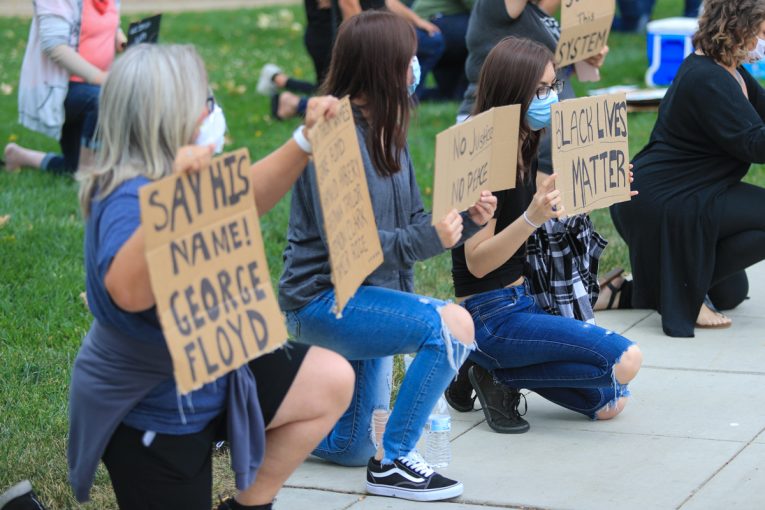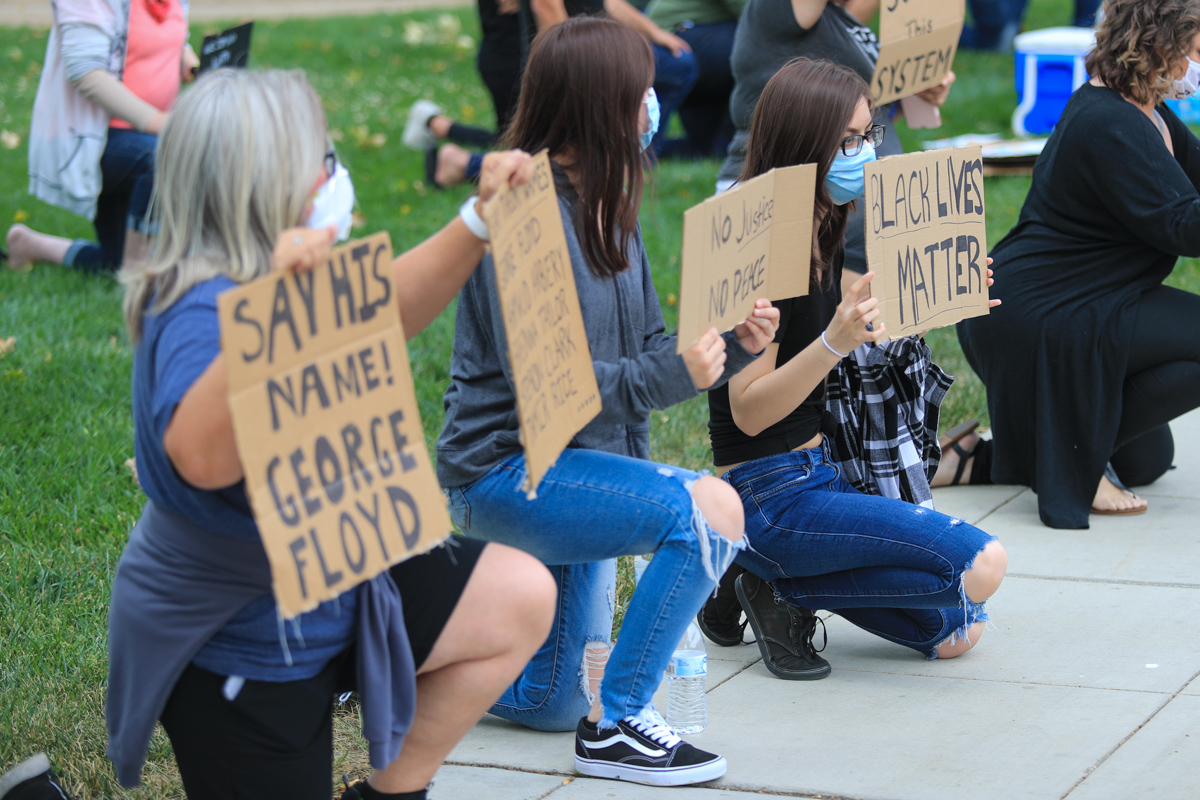

By Anais Cortes
The ACLU’s recent research report, “The Other Epidemic: Fatal Police Shootings in the Time of COVID-19,” offers a systematic review of the persistence of police brutality—specifically fatal shootings—not only in the past five years, but in the months following the unprecedented coronavirus pandemic.
The ACLU notes that people of color have continuously faced racism, prejudice, and discrimination at the hands of police, who have disproportionately targeted poor and marginalized communities.
Whether it be being complicit in lynchings in the 1900s, to higher rates of stopping, frisking, arresting, and jailing, to standing by as mobs incited violence against them, people of color—especially Black people—have had to endure the “epidemic of police violence” for far too long, suggests the ACLU.
With the onset of the global pandemic, many in the social justice community expected to see a decrease in police brutality. State governments issued stay-at-home orders and enforced social distancing, while police departments “sought to minimize police-initiated contact with the public,” said the ACLU.
Its report examines whether or not “unprecedented societal isolation combined with police departments relaxing routine enforcement corresponds to a decrease in the frequency with which police  fatally shoot people.”
fatally shoot people.”
Unfortunately, yet perhaps unsurprisingly, the results show police fatally shot people during COVID-19 at the same rate they normally do—an average of 19.4 fatal shootings per week.
According to the ACLU, from January 1, 2015, to June 30, 2020, police fatally shot 5,442 people. Twenty-four percent of those fatally shot were Black people, who only account for 13 percent of our nation’s population. Seventeen percent of those fatally shot were Latinx, who only account for 16 percent of our nation’s population.
It is worth noting that Native American/Indigenous people are equally as likely as Black people to “experience the highest rates of fatal police shootings,” claims the ACLU, and in 2019, both groups “were three times as more likely than white people to be fatally shot by police.”
Due to tribal lands being under federal jurisdiction, and overall poor media attention for Native communities, there is a lack of consistent and accurate information regarding police violence against these marginalized people.
However, according to the ACLU, “their rate of death by fatal police shootings has ranged from a low of 4.3 per million in 2015 to a high of 10.2 per million in 2017,” a spike mainly attributed to high profile events such as the killing of Paul Castaway, and tensions at the Dakota Access pipeline and at Standing Rock Sioux Reservation.
So why do police fatally shoot people of color at higher rates than any other group?
This is an impossible question to answer completely and correctly, but, according to the ACLU, there are a variety of factors that can provide explanations. Whether it be “racial disparities in whom police stop and arrest, citizen complaints, crime reporting, access to trauma care, 911 calls, neighborhood context,” or the racist tropes that persist in dehumanizing and criminalizing Black people, all factors contribute to the oppression and violence against people of color, writes the ACLU.
Regarding fatal police shootings during the pandemic, the ACLU concluded, “At the national level, COVID-19 has had no effect on the frequency of fatal police shootings, even though crime either decreased or stayed the same during the pandemic.”
“Because of stay at home orders, social distancing requirements, and police department policies advising officers to initiate fewer investigative contacts, we might have expected fewer fatal policies in 2020 relative to years past,” the ACLU states.
From 2015 to 2019, 19.4 fatal shootings occurred per week during the first 27 weeks of the year. In 2020, there have been an average of 19.4 fatal shootings per week.
As of June 30, 2020, police officers had fatally shot 511 people.
The ACLU writes, “These sobering findings suggest that not even a deadly virus – one that had driven people indoors and required social distancing – can curb the American epidemic of fatal police shootings or the disproportionate rate of police killings of Black, Brown, and Native American/Indigenous people.”
The report gives recommendations for creating lasting change in police reform, such as divesting from current policing budgets and reinvesting in life-affirming alternatives, ending the militarization of police, and establishing alternatives to police response for people in crisis.
Other recommendations include prohibiting police from enforcing a range of non-serious offenses, transforming use-of-force statutes, creating independent oversight structures with teeth, collecting and disseminating comprehensive, publicly available data, and abolishing qualified immunity.
Data for incident-level fatal shootings was gathered by the Washington Post’s Fatal Force Database, while overall race-specific fatal shooting rates was calculated through population estimates from the U.S. Census Bureau.
Some limitations in data collection from the Washington Post included only single-race categories, and the grouping together of Asian and Pacific Islander people.
To sign up for our new newsletter – Everyday Injustice – https://tinyurl.com/yyultcf9

Ya think? Like maybe the percentage of crimes committed?
So, what do we take from this, crime went up?
I think that’s a typo – it should have read “either decreased or stayed the same”
Yeah, a lot of that going on… Sac Bee, Davis Emptyprize, DV…
And poor ‘grammer’, or grandpa… and the liberal arts majors contribute the most… when they should be the least guilty… traditionally… that used to be reserved to enjunears, and ohter sciance fulk…
So much for ‘editing’… self, others in charge, folk who ‘just pass it on’… whatever… it is what it is…
If you are trying to piss me off – this is a good way of doing it. I have 70 people working in the field and only three people who can do editing and one of them has a very intense day job.
We have now officially corrected the sentence to: “crime either decreased or stayed the same during the pandemic.”
It got inadvertently changed in our editing process.